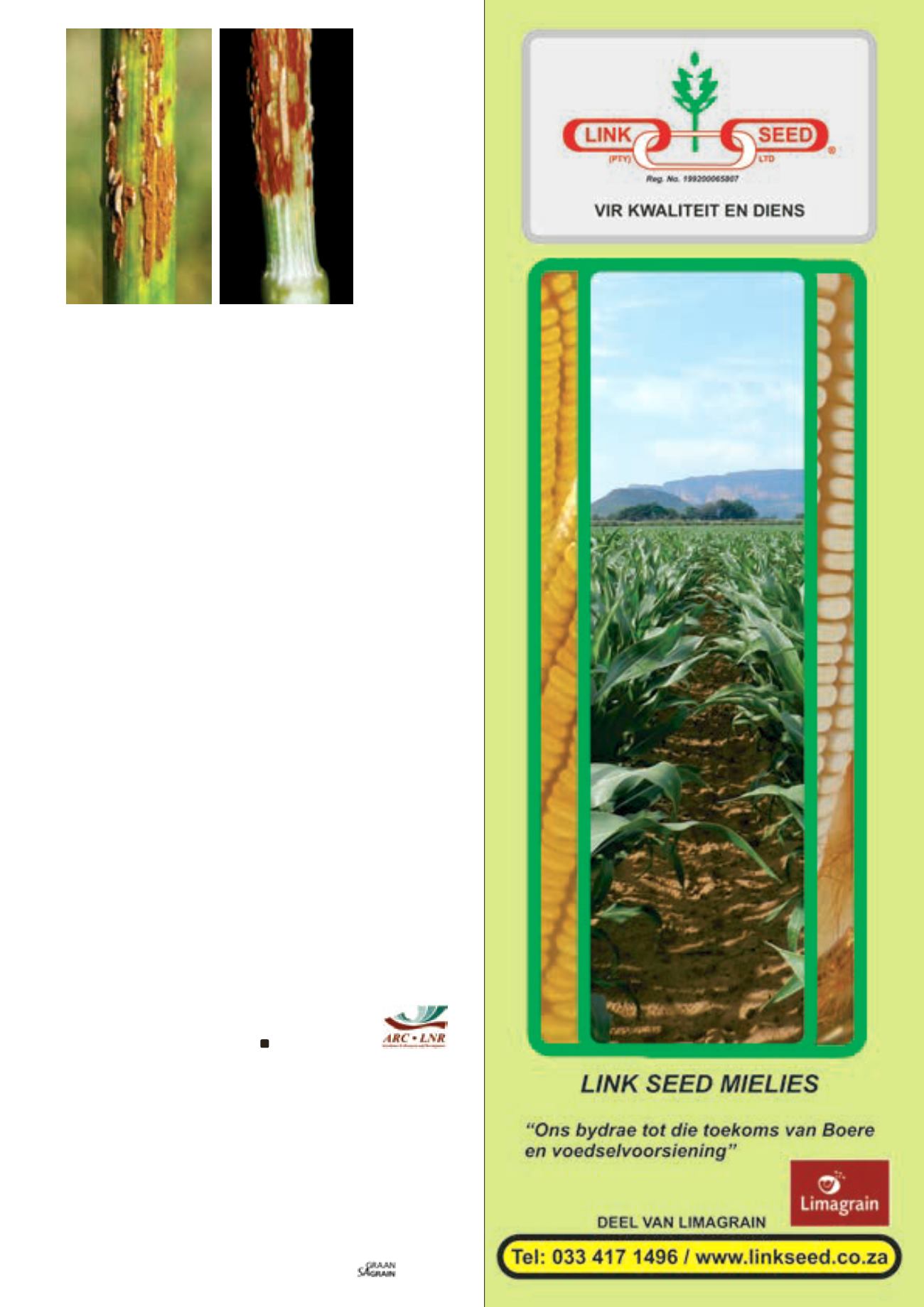
93
genetic analyses suggests that race 2SA106 may not represent an
introduction, but rather a local adaptation.
In response to the occurrence of Ug99 variants in South Africa,
particularly those virulent against
Sr24
and
Sr31
, researchers from
the ARC-SGI and the University of the Free State (UFS), screened
several resistance genes in order to identify effective genes which
couldbedeployed in future cultivars.
Also, in collaboration with the Borlaug Global Rust Initiative, which
was established to co-ordinate global research aimed at controlling
Ug99, the ARC-SGI has annually been screening wheat germplasm
at the international stem rust screening nursery in Kenya. Both
studies led to the identification of several genes/germplasmwhich
are resistant to Ug99 variants and other virulent races prevalent in
East andSouthAfrica. Some of these genes are being incorporated
into breeding lines by the Germplasm Development Division of
ARC-SGI.
Conclusion
Ug99 variants may not be as threatening to wheat production in
South Africa as they would be in the wheat producing countries of
East Africa and Asia, where highly susceptible cultivars are widely
grown. However, virulence of races such as 2SA107 on a large
proportion of spring wheat lines and cultivars is a case for con-
cern. In an effort to develop cultivars which are resistant to Ug99
variants, selected effective resistance genes are being utilised by
breedingprogrammes inSouthAfrica.
By timeously detecting new and virulent races (including the Ug99
variants), and by identifying effective resistance genes which
could be used in breeding new cultivars, the annual rust surveys
which have been conducted by the ARC-SGI in collaboration with
the rust research team at the UFS, made significant contributions
to stem rust resistancebreeding inSouthAfrica.
An important addition in recent years has been the application of
DNA technology for rust race identification at the UFS. This work
cannowput the rust diversity inSouthAfrica into contextwithother
African countries. It is thus essential to extend the rust monitoring
programme of the ARC-SGI to neighbouring countries as there is
ample evidence to suggest rust race exchange between Southern
African countries. Monitoring the rust situation
in neighbouring countries will assist in ensuring
sustainable development and the availability of
resistant cultivars inSouthAfrica.
References
Pretorius,Z.A.,Bender,C.M.,Visser,B. andTerefe,T. 2010. First reportof a
Puccinia
graminis f. sp. tritici
race virulent to the
Sr24
and
Sr31
wheat stem rust resistance
genes inSouthAfrica.
Plant Disease
94: 784.
Pretorius, Z.A. and Prins, R. 2012. Are South African wheat cultivars protected
against Ug99 stem rust? Presented at the 9th Southern African Plant Breeding
Symposium, 12 - 14March 2012, Skukuza, SouthAfrica.
Pretorius, Z.A., Singh, R.P., Wagoire, W.W. and Payne, T.S. 2000. Detection of
virulence towheat stem rust resistance gene
Sr31
in
Puccinia graminis f. sp. tritici
inUganda.
Plant Disease
84:203.
Visser, B., Herselman, L., Park, R.F., Karaoglu, H., Bender, C.M. andPretorius, Z.A.
2011. Characterisation of two new
Puccinia graminis f. sp. tritici
races within the
Ug99 lineage inSouthAfrica.
Euphytica
179: 119 - 127.


